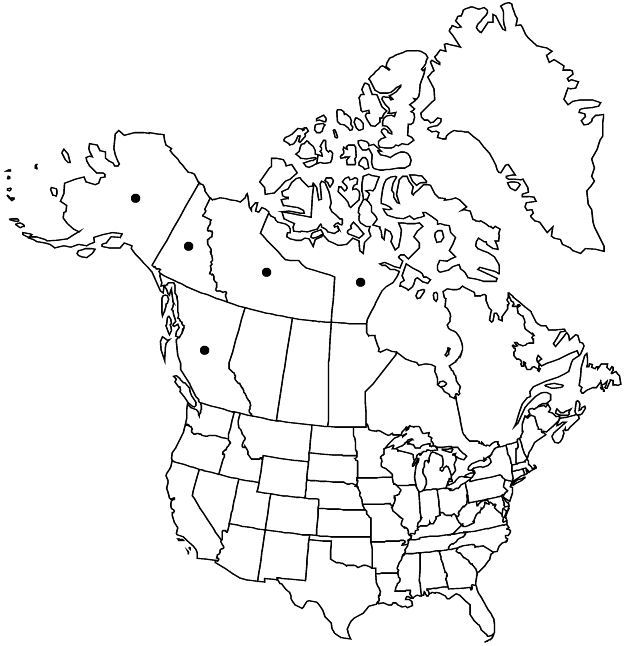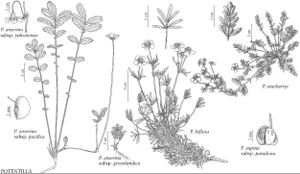Difference between revisions of "Potentilla biflora"
Ges. Naturf. Freunde Berlin Mag. Neuesten Entdeck. Gesammten Naturk. 7: 297. 1816.
FNA>Volume Importer |
imported>Volume Importer |
||
| Line 51: | Line 51: | ||
|publication year=1816 | |publication year=1816 | ||
|special status=Illustrated | |special status=Illustrated | ||
| − | |source xml=https:// | + | |source xml=https://bibilujan@bitbucket.org/aafc-mbb/fna-data-curation.git/src/bb6b7e3a7de7d3b7888a1ad48c7fd8f5c722d8d6/coarse_grained_fna_xml/V9/V9_187.xml |
|subfamily=Rosaceae subfam. Rosoideae | |subfamily=Rosaceae subfam. Rosoideae | ||
|tribe=Rosaceae tribe Potentilleae | |tribe=Rosaceae tribe Potentilleae | ||
Revision as of 00:27, 28 May 2020
Basal leaves: petiole 1–4 cm, long hairs absent or sparse, 1.5–2 mm, crisped hairs absent or sparse; leaflet lobes linear, 10–20 × 1–2 mm, surfaces with long hairs sparse or absent. Flowers: epicalyx bractlets oblong, ovate, or lanceolate, 2.5–4 × 0.4–1.3 mm; sepals 3.5–5 mm, apex acute to apiculate; petals 6–10 × 4–10 mm; filaments 2.8–4 mm, anthers 0.6 mm; carpels 15–25. Achenes 1.5–2 mm. 2n = 14.
Phenology: Flowering summer.
Habitat: Dryas fellfields, gravel terraces, well-drained soil, often with seasonal seepage, on calcareous substrates
Elevation: 0–2000 m
Distribution

B.C., N.W.T., Nunavut, Yukon, Alaska, Asia.
Discussion
In North America, Potentilla biflora is mostly Beringian, barely reaching northern British Columbia and western Northwest Territories, with one locality in Nunavut (southern Victoria Island). The amphi-Beringian range is strongly isolated from other Asian populations, the closest being in the Altai Mountains of south-central Siberia. Two varieties are accepted in China (Li C. L. et al. 2003c), with North American plants falling in var. biflora.
Selected References
None.
